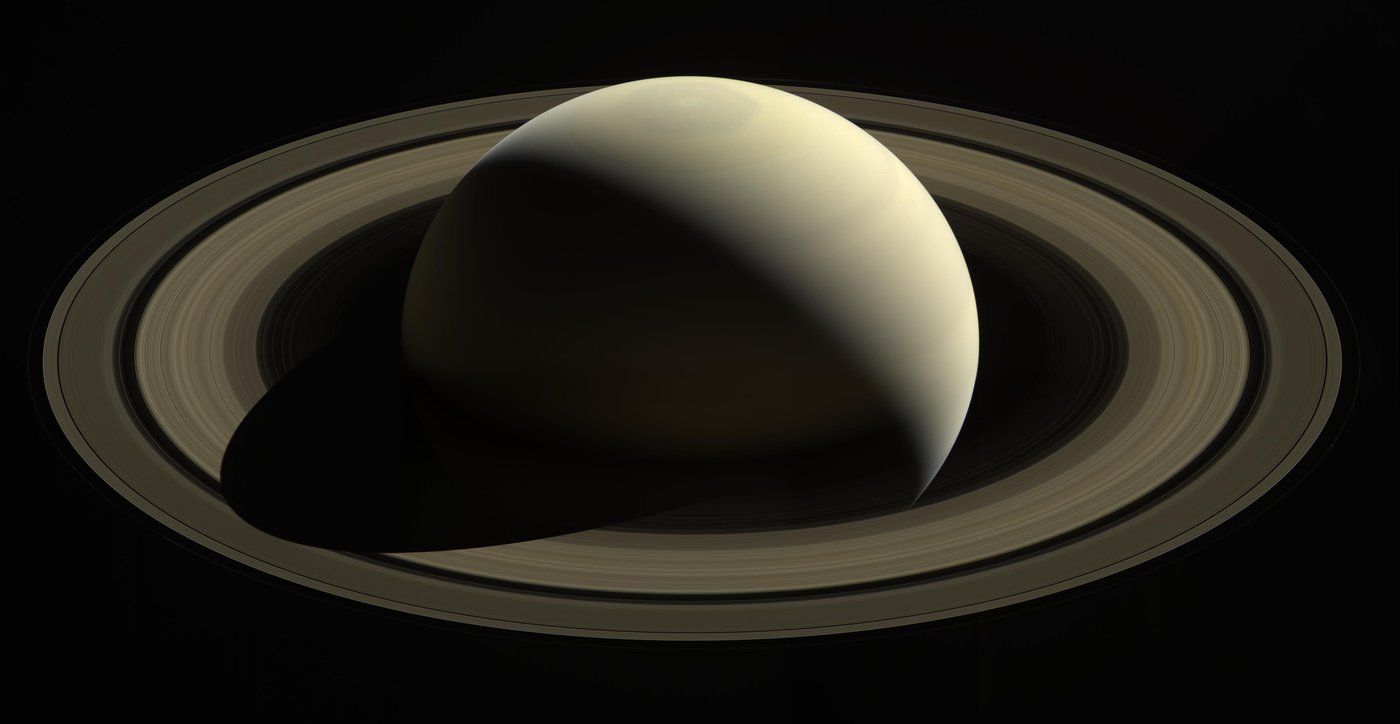Is An Ancient Moon Responsible for Saturn's Rings?
In a recent study published in Science, a team of researchers led by the Massachusetts Institute of Technology suggest that Saturn’s rings originated from the breakup of a former moon, which they refer to as Chrysalis. This study has the potential to unlocking the origins of our solar system’s arguably most compelling feature, Saturn’s rings.
Since Saturn’s tilt shares similarities to Neptune’s, the farthest planet in the solar system and orbits just under 2 billion miles from the ringed planet, astronomers have long hypothesized that Saturn’s tilt derives from that of Neptune’s. However, new models demonstrate that while both planets might have been synced up long ago, Saturn has since broken free of Neptune’s gravitational influence. The potential reason? A mission moon, which the researchers call Chrysalis.
The researchers estimate that while Chrysalis orbited Saturn for billions of years, its orbit became unstable about 160 million years ago, causing it to be ripped apart while also breaking Saturn free of Neptune’s gravitational influence. The previous existence of Chrysalis could answer two long-lived mysteries about the ringed planet: the age of Saturn’s rings along with its present-day tilt, with the former having been previously calculated to be approximately 100 million years old.
"Just like a butterfly's chrysalis, this satellite was long dormant and suddenly became active, and the rings emerged," says Dr. Jack Wisdom, a professor of planetary sciences at MIT, and lead author of the study.
For the study, the researchers utilized data from NASA’s Cassini mission that was gathered during what’s known as its “Grand Finale”, which was when the spacecraft was slowly deorbiting and eventually burned up in Saturn’s atmosphere. During this last phase of the mission, Cassini mapped the gravitational field of the entire planet, which can be used to figure out Saturn’s mass distribution. When the research team’s models matched those of Cassini’s data, the researchers were surprised to discover that these new calculations put Saturn close to, but just beyond the resonance with Neptune.
The researchers found the loss of Chrysalis explains both Saturn’s present-day tilt precession, along with the formation of its much-admired rings.
"It's a pretty good story, but like any other result, it will have to be examined by others," said Dr. Wisdom. "But it seems that this lost satellite was just a chrysalis, waiting to have its instability."
Sources: Science
As always, keep doing science & keep looking up!









